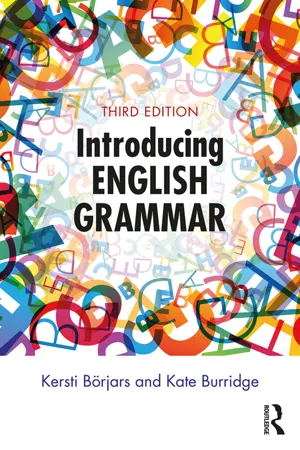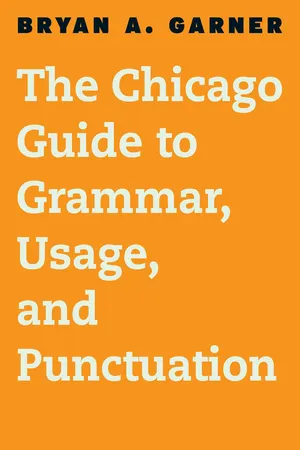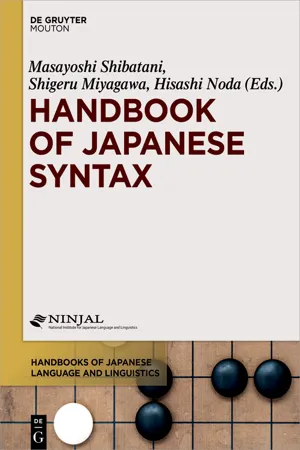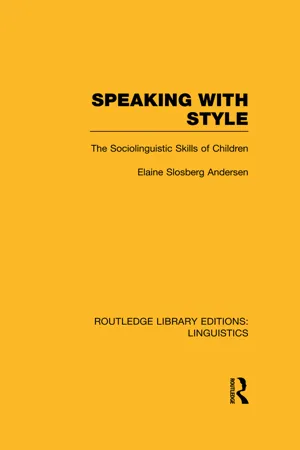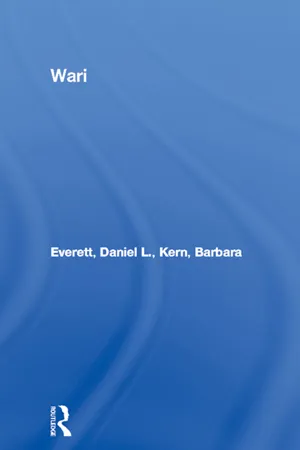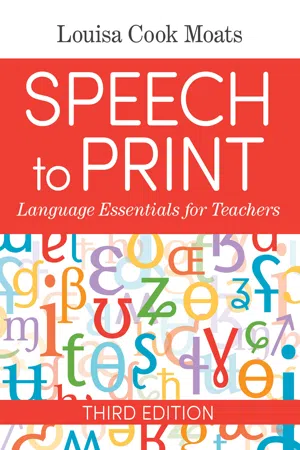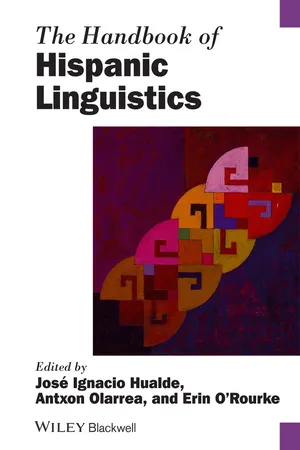Languages & Linguistics
Types of Sentence
In linguistics, sentences can be classified into four main types: declarative, interrogative, imperative, and exclamatory. Declarative sentences make statements, interrogative sentences ask questions, imperative sentences give commands or make requests, and exclamatory sentences express strong emotions or feelings. Understanding the different types of sentences is essential for effective communication and language comprehension.
Written by Perlego with AI-assistance
Related key terms
7 Key excerpts on "Types of Sentence"
- eBook - ePub
- Kersti Börjars, Kate Burridge(Authors)
- 2019(Publication Date)
- Routledge(Publisher)
5Different sentence types
5.1 Introduction
In Chapter 4 , we looked at the functions that phrases can have within sentences. We will now turn to structure again and consider the different structures that sentences can have and how they correspond to different meanings. There are four main Types of Sentences which can be distinguished structurally for English. They are:- (a) DECLARATIVES Esther Luer discovered a giant arachnid in her weekly groceries. (AUS#73:9)
- (b) IMPERATIVES Discover arachnids in your weekly groceries!
- (c) INTERROGATIVES Did Esther Luer discover a giant arachnid in her weekly groceries? What did Esther Luer discover? Where did she discover this arachnid?
- (d) EXCLAMATIVES And what an arachnid it was!
The important thing about all these sentence types is that they can be defined simply in terms of structure; in other words, we can tell by the form of a sentence which type it belongs to, and we shall show in the following subsections exactly how this is done. We refer to ‘sentences’ here; once you have worked through Chapter 8 , you might want to refer to these as ‘clauses’ instead, and in the particular examples we will look at, specifically as ‘main clauses.’We can also distinguish four different uses of sentences, often referred to as MEANING TYPE or ILLOCUTIONARY FORCE . Of course we can make much finer-grained divisions of the ways in which we use sentences, but these are the ones that are standardly assumed:- Statement: roughly to tell the hearer or reader about something.
- Question: asking the hearer or reader for information about something; either this can be about whether something is or isn’t true or it can be a request for more specific information.
- Directive: a cover term for issuing commands, requests, instructions, prohibitions, permission and even providing advice.
- Exclamation: to express surprise, disgust, annoyance at something.
In short, for each of the structural sentence types, there is a typical function. Declaratives are usually used to make a statement, interrogatives normally pose questions, imperatives issue directives and exclamatives make exclamations. However, this is just the typical correspondence between form and function; in fact, interrogatives can be used for purposes other than posing a question and questions can be asked without using an interrogative structure. Why don’t you mind your own business! looks like a question, for instance, in that it starts with why - Bryan A. Garner(Author)
- 2016(Publication Date)
- The University of Chicago Press(Publisher)
II. Syntax Sentences, Clauses, and Their Patterns286 Definition .Syntax is the collective term we use to denote all the rules governing how words are arranged into sentences. In an analytic language like English—one that, unlike a synthetic language, uses word order to show word relations (as opposed to inflections of various kinds)—syntax is particularly important in expressing meaning. (See § 297 .) Through syntax, we can make four types of utterances: statements, questions, directives, and exclamations.287 Statements .Most sentences are statements having a declarative structure in which (1) the clause contains a subject and (2) the subject precedes the verb. Sometimes in speech and informal writing, the subject is merely implied {[he] missed the ball} {[I] think I’ll go to the store}. In a few negative idioms, the subject may follow part of the verb phrase {scarcely had we arrived when we had to return}.288 Questions .Sentences that seek to elicit information are known as questions . They have an interrogative structure, which typically begins with a question word. There are three main types: (1) yes–no questions, which are intended to prompt an affirmative or negative response {will we be gone long?}; (2) wh - questions, so called because they characteristically start with who , what , when , where , why , which , or how (not quite a wh - word, but it counts) {which apples do you want?}; and (3) alternative questions, which prompt a response relating to options mentioned in the sentence {would you rather play golf or tennis?}.289 Some exceptional types of questions .Four types of interrogative utterances aren’t classifiable under the three categories given just above. Two are yes–no questions. The first is the spoken sentence in which one’s pitch rises at the end, in a questioning way—but the structure is that of a declarative sentence {he’s going to Corpus Christi?}. To show vexation in such a question, the question marked may be paired with an exclamation mark {she’s going to Padre Island?!}. The second special type of yes–no question is the tag question, in which the interrogative inversion appears at the end of a statement {he has arrived, hasn’t he?} {it’s good, isn’t it?}. A few tag questions are signaled by particular words without the interrogative inversion {it’s raining, right?} {you’re tired, eh?} {you want to go, yes?}. A third special type is the exclamatory question, in which the interrogative structure appears, but when the statement is spoken, one’s tone normally falls at the end {isn’t it nice out here!} {how great is this!}. Finally, a rhetorical question is phrased in the interrogative structure but is meant as an emphatic or evocative statement—without the expectation of an answer {why should I care?} {who knows how long it might take?}.- eBook - ePub
- Masayoshi Shibatani, Shigeru Miyagawa, Hisashi Noda(Authors)
- 2017(Publication Date)
- De Gruyter Mouton(Publisher)
Yoshio Nitta1Basic sentence structure and grammatical categories
1Introduction
Not only in Japanese but probably in most languages, from the point of view of the elements comprising the core of sentence formation, sentences can be divided into two types: free-standing word sentences and predicate sentences. Predicate sentences can be further subdivided into several subtypes, depending on one’s point of view. In terms of the parts of speech comprising the predicate, sentences can be divided into verbal sentences, adjectival sentences, and nominal sentences; in terms of the events described by the sentence, they can be divided into action sentences, stative sentences, and attributive sentences; in terms of the speech-communicative function played by the sentence, they can be divided into declarative, interrogative, imperative, and purposive.The type of the sentence affects its internal structure, and affects the types of grammatical categories that can appear in a sentence and how the grammatical meaning associated with the grammatical categories is realized. The type of text that forms the context in which a sentence appears also affects the type of sentence that can appear and the grammatical categories that can appear in the sentence. One such text type difference is the difference between a conversation in which there exists a hearer and a monologue in which there does not. This difference in type affects the type of sentence and the grammatical categories that may appear.2Free-standing word sentences
A predicate sentence is composed of the predicate that forms its core and some number of elements subordinate to it. Predicate sentences have a varied internal structure and an assortment of grammatical categories may appear. This chapter outlines the basic internal structures of predicate sentences and the grammatical categories that may appear in them. - eBook - ePub
Speaking With Style (RLE Linguistics C: Applied Linguistics)
The Sociolinguistics Skills of Children
- Elaine Andersen(Author)
- 2014(Publication Date)
- Routledge(Publisher)
Chapter six Variation in utterance form and function Introduction In this chapter, I examine the utterances which constitute each role in terms of their linguistic form and their speech act category. The analysesThree separate but related analyses are presented in this chapter. The first is an analysis of the linguistic forms of the utterances in the corpus. The second is a speech act analysis that examines the functions of the utterances. The third analysis provides a framework for examining the relationship between form and function.Sentence types I used five (largely syntactic) classes in analysing the sentence types in the data.(i) Statements (S) traditionally characterized as sentences in the indicative, or ‘unmarked for mood’ (Lyons 1968: 307) occurred most frequently. Sentence fragments and elliptical sentences that appeared to be statements by pragmatic and intonational markings were also coded as statements, e.g., And carrots. Greetings, e.g., Good morning, hi, were judged to be statements on the basis of their pragmatic function, i.e., I’m greeting you. (However, their conventionalized nature was noted by a subscript ‘f’ for formulaic.)(ii) Questions (Q) were judged to be such by the presence of Wh-words, subject-auxiliary inversion, interrogative particles such as hunh?, and by intonation pattern.(iii) Exclamations (coded as!) included epithets such as oh, goody! and oh, no!(iv) For the fourth sentence type, imperatives (I) or commands, there were three different syntactic realizations. The reason for keeping these separate was the different social attitudes expressed by each sub-type. - Chapter 1Syntax1.1. GENERAL QUESTIONS1.1.1. Sentence typesA complete discussion of the three major 'ON sentence types can be found in 1.1.1.4 . The three general classifications are simple, COMP and verbalized (direct speech type) sentences. A general discussion of direct and indirect speech sentence types, interrogatives and imperatives, however, follows in sections 1.1.1.1 , 1.1.1.2 and 1.1.1.3 . In this section we distinguish sentences based on a combination of functional and formal criteria. It is not our claim that the types we identify could not be reduced (or expanded), merely that distinguishing them here gives the reader the clearest view of how different communicative functions are accomplished via different forms.1.1.1.1. Direct and indirect speech sentence typesDirect speech forms are common in 'ON narrative, although they are not always glossed as literal direct speech. See 1.1.1.4.3 for a discussion of verbalized sentences, and 1.1.1.4.3.2.1 for the description of the structure of verbalized direct speech sentences.There is no indirect speech type in the language, though the concept can be expressed in a direct speech present or past tense construction, in which the verbal inflectional clitic of the matrix clause must be either plural realis past/present or plural passive, as in (1a) and (2a) respectively. In the case of the latter, the subject of the embedded speech is coreferential with the object of the matrix clause, and the subject of the matrix clause must be third person plural, marked only by the VIC, not by a free-form nominal. When such is not the case, the construction is considered a literal direct speech. The examples in (1b) and (2b) are only acceptable if they are interpreted as direct speech. An indirect speech interpretation would not be allowed. The embedded speech in the examples below is italicized.This use of the direct speech sentence type to report indirect speech is not available with future tense. In the past/present direct speech type constructions illustrated in (1) and (2), the subject of the embedded speech must be coreferential with the object of an active matrix clause or the subject of a passive clause. In future tense constructions, however, the subject of the embedded speech must be coreferential with the subject of the matrix clause. The ungrammatical example in (3b) is wrong for two reasons: (i) as a future tense construction (see 1.1.1.4.3.2.2 ), the subject marked in the embedded clause should be coreferential with the subject of the matrix clause (in the example, it is coreferential with the object); and (ii) as a so-called indirect speech type, the subject marked in the matrix clause should be third person (in the example, it is first person). (We gloss carawa
- eBook - ePub
Speech to Print
Language Essentials for Teachers
- Louisa Cook Moats(Author)
- 2020(Publication Date)
- Brookes Publishing(Publisher)
natural grammatical knowledge. It is learned from exposure to language and requires little formal instruction. It does not depend on having heard any particular sentence before and does not depend on the speaker’s knowledge of specific word meanings. It does depend on the speaker having heard many sentences that are formed within the grammatical rule, and the speaker’s ability to assimilate the underlying structures from exposure. Remarkably, most human infants begin that learning process before they are a year old, as long as caregivers communicate verbally with them.To summarize, the following truths are evidence that syntactic rules and frameworks are part of what the speaker of a language knows, and that this language system has unique properties. •The existence of syntactically correct nonsense indicates that the syntactic rule structure exists apart from the meaning of the words it might contain. •Truth or meaning can be expressed in sentences that are considered to be grammatically incorrect.•The order and grouping of words within a language system allows us to understand relationships among the ideas, such as subject–verb–object relationships, or to answer basic questions such as Who did what to whom? How? When? Why? Where?•Sentences may be ambiguous—they can be interpreted in two or more ways. •Sentences with different word sequences can mean the same thing. •Words can be combined in an infinite number of ways within the syntactic frames or rules of a language. WHAT IS A SENTENCE?A sentence (S) is generally defined as an underlying syntactic scaffolding with two required slots that tell a simple story: Something or someone is/was/does/did something to something or someone else. What is the nature of the slots in this narrative scaffolding? Each structural slot holds categories of words, phrases, or clauses that play required roles of the doer or topic, the doing or happening, and (often) the done to. The doer or topic—the thing, idea, or person that the sentence is about—is its subject. The action or being slot of the sentence is its predicate; - eBook - ePub
- José Ignacio Hualde, Antxon Olarrea, Erin O'Rourke(Authors)
- 2012(Publication Date)
- Wiley-Blackwell(Publisher)
“sentential force.” The relation between “sentential type” and “sentential force” is shown in (3), adapted from Portner (2009: 263). Portner only includes the first three types. Following the NGDLE, I have added exclamatives and desideratives. Notice that dubitative (2g) and probability sentences (2h) have been left out of our classification, as they also have been in the NGDLE. I return to these constructions in Section 4.(3)However, it is clear that we need yet another level to capture the complete meaning of a sentence. Consider (4):Sentential type Sentential force Declarative Asserting Interrogative Asking Imperative Requiring Exclamative Exclamation Desiderative Wishingn (4) a. ¿Puedes decirme la hora? You-can tell-me the hour ‘Can you tell me the time?’ b. ¡Dime la hora, por favor! Tell-me the hour, please ‘Tell me the time, please!’Syntactically speaking, (4a) is an interrogative, and, as such, it has the sentential force of asking. In fact, someone could (jokingly) assume that this is a real question, answer “yes” and stop there, without telling us the time! However, we generally do not mean (4a) as a question, but as a request for someone to tell us the time, similar to (4b). This suggests that there is yet another level of meaning beyond that of sentential force. Semanticists and pragmaticists refer to this level as “illocutionary force” (Sp. fuerza ilocutiva/elocutiva ); that is, “the communicative action which the speaker intends to perform by getting the hearer to understand that this is the speaker’s intention” (Portner 2005:192). Following Portner (2009: 263), I will assume that “sentential force must be analyzed at the interfaces among syntax, semantics, and pragmatics, while illocutionary force is a pragmatic phenomenon having to do with the speaker’s communicative intentions, analyzed in terms of speech act theory (e.g., Austin 1962; Searle 1969).”3 Basic sentential types
According to Portner (2005: 194), “the three sentential types of declarative, interrogative, and imperative seem to be universal. There are other ‘minor’ clausal types, like exclamatives and optatives, in some languages. But even all of these do not match the diversity of illocutionary acts, which include promising, threatening, hinting, proposing, denying …” In what follows, we will concentrate on the different constructions in which these basic sentential types are realized in Spanish. Where appropriate, we will briefly discuss some of the unexpected illocutionary forces that these constructions may have.
Index pages curate the most relevant extracts from our library of academic textbooks. They’ve been created using an in-house natural language model (NLM), each adding context and meaning to key research topics.
